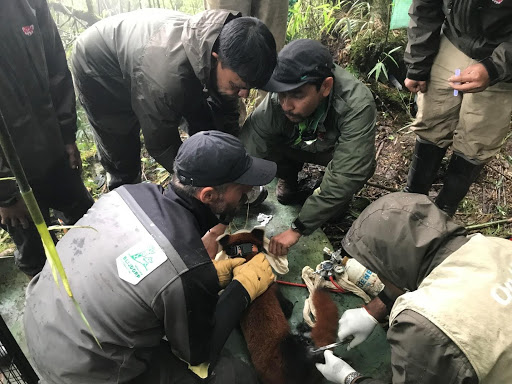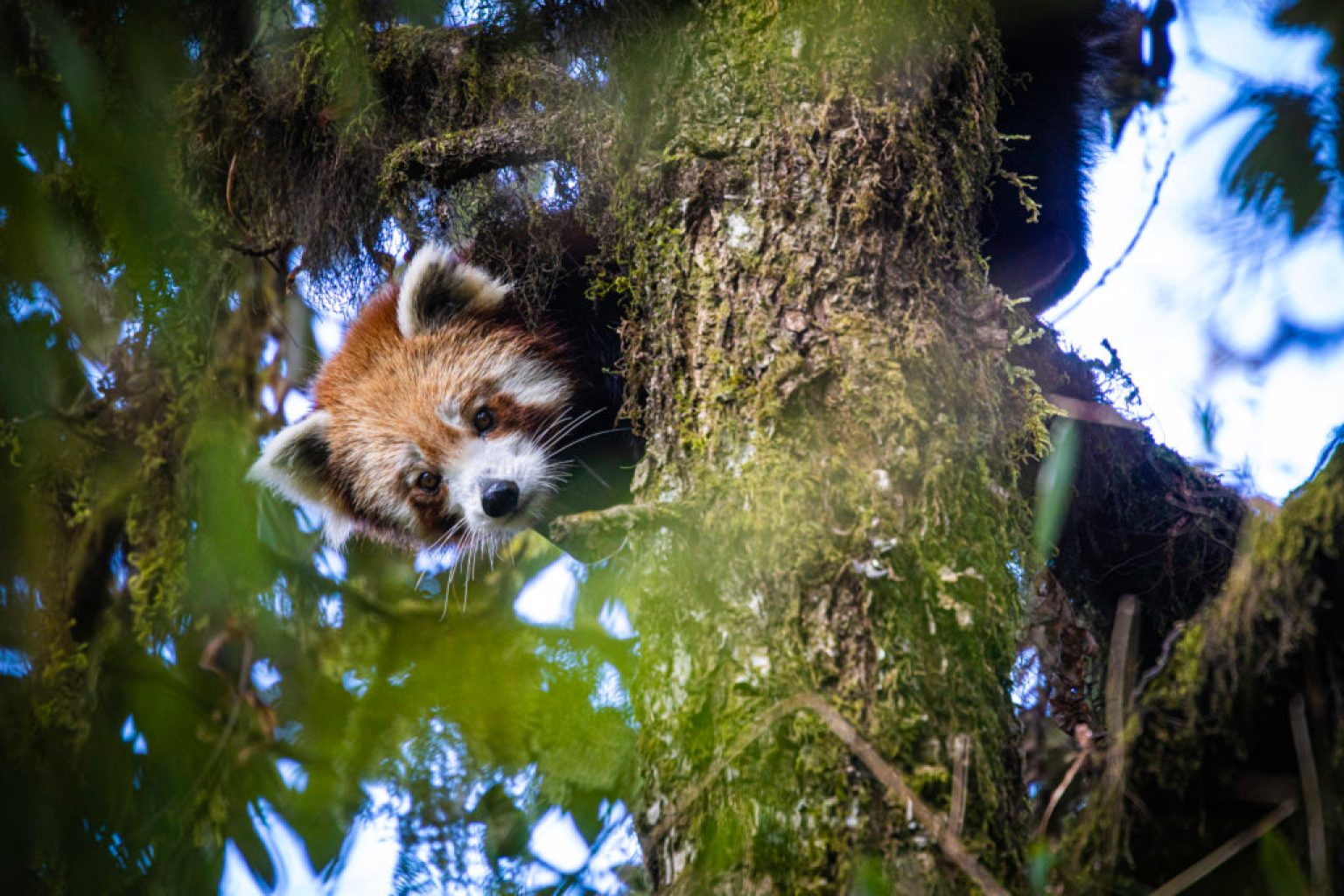Press Release: Ten Red Pandas Collared in Nepal For Groundbreaking Study

> Download a PDF of the Press Release
Kathmandu, Nepal — Ten wild red pandas have been equipped with GPS-satellite collars in the Panchthar-Ilam-Taplejung (PIT) Corridor: a belt of forest that connects protected areas in Nepal and India. This is Nepal’s first red panda GPS collar study.
Led by the Ministry of Forests and Environment, Department of Forests and Soil Conservation (DoFSC), and Department of National Parks and Wildlife Conservation (DNPWC), and in collaboration with Red Panda Network (RPN), the red panda collar study took three months (September to December 2019) to complete in Sandakpur Rural Municipality of Ilam district, eastern Nepal. Six females and four males were successfully collared.
The collaring project was facilitated by the country’s first five-year (2019-2023) action plan for red pandas. RPN collaborated with the government of Nepal in the development of the action plan.
The research team consisted of officials from the Divisional Forest Office, Ilam, DoFSC, DNPWC; Purushottam Pandey, Veterinary Officer at the Directorate of Livestock and Fisheries (DLF), Janno Weerman, the Zoological Manager at Rotterdam Zoo and Red Panda EAZA Ex-situ Program Coordinator; and RPN’s Damber Bista, a Ph.D. student at the University of Queensland in Australia who is also the principal investigator of this research—as well as RPN’s Forest Guardian, conservation and research teams.
“This is a great milestone in red panda conservation”, says Man Bahadur Khadka, Director General of the DOFSC. “We assure the protection and conservation of this charismatic species whose survival is mainly threatened by anthropogenic factors.”

Paaru, the first red panda to be GPS collared in Nepal on September 22, 2019. © Sonam Tashi Lama/Red Panda Network
Photo 1 (top of page): Mechhachha, collared on December 4, 2019. © Damber Bista/Red Panda Network/Queensland University
With global estimates at less than 10,000 individuals surviving in the wild, the red panda is categorized as an endangered mammal on the International Union for Conservation of Nature (IUCN) Red List of Threatened Species. Red pandas serve as an indicator species of their Eastern Himalayan temperate forest habitat—one of our planet’s biodiversity hotspots—as their occurrence is related to canopy cover and bamboo abundance. Red pandas are the only extant member of their taxonomic family, and according to Dr. Angela Glatston, Global Species Management Plan Convener and the Chair of RPN’s Board of Directors, if they were to become extinct that would be, at least taxonomically, “like losing the whole cat family, from lions to domestic cats.”
The collar study is an important component of RPN’s long-term monitoring initiative. It will not only provide critical baseline data on red panda ecology, distribution, and behavior in the wild but will also apprise stakeholders with valuable insight into landscape-level conservation efforts required to manage biological corridors. “This is a proud moment for us to have the opportunity to fulfill one of the objectives of Nepal’s Red Panda Conservation Action Plan”, comments Ang Phuri Sherpa, RPN’s Country Director in Nepal.
“This study aims to better understand how red pandas interact in human-dominated landscapes. The collars are programmed to record data every two hours which will be transferred via a satellite system for one year. The data will help us get a better insight into their movement and space-use pattern, social behavior, and their response to disturbances.”, says Damber Bista.
The study is being generously funded by Rotterdam Zoo who continues to have an essential role in red panda research and conservation. In 1978, they launched the international red panda studbook and have been coordinating it ever since.
 Red panda 'Paaru' with GPS collar. © James Houston/RPN
Red panda 'Paaru' with GPS collar. © James Houston/RPN
This is the first time GPS-satellite collars are being used to study red pandas in the wild. During the 1980s, the pioneer red panda biologist from Nepal, the late Pralad Yonzon, used VHF technology to study red pandas in Langtang National Park, central Nepal.
Prior to RPN’s collar study, the GPS collars were tested with two captive red pandas at the Rotterdam Zoo to evaluate their effectiveness and any possible disruption of the animal’s movement or behavior. The collar devices were found to be effective with no disruption.
“Rotterdam Zoo finds it very important that in-situ and ex-situ conservationists work together to protect the red panda and their habitat. Part of this cooperation is the GPS collaring research. Our zoo is supporting this research because the results of this research will give us more insight into the ecology of the species that helps us to take more specific measurements to protect the red panda and their natural habitat,” says Janno Weerman, the Zoological Manager at the Rotterdam Zoo and Red Panda EAZA Ex-situ Program Coordinator. Janno was also involved in RPN’s collar study in 2019 where he primarily trained Nepali researchers on the safe handling of the animal.
The collars provide exceptional data on the movement and habitat use of the red pandas. RPN’s Forest Guardians also use VHF tracking devices and utilize camera traps to collect additional data. The red pandas were named Paaru, Dolma, Chintapu, Mechhachha, Bhumo, Senehang, Ngima, Brian, Ninamma, and Praladdevi by local people (including Forest Guardians); the names represent culture, landscape, language, and ethnicity of the region. The name Praladdevi was given in tribute to Pralad Yonzon.
RPN is working with Divisional Forest Offices and more than sixty Community Forests with active conservation programs in ten districts in Nepal.
For further information contact: Madhuri Karki Thapa, Under Secretary, Department of Forests and Soil Conservation, Government of Nepal, Phone: +977 1 4221231, Email: madhureethapa@gmail.com
Sonam Tashi Lama, Program Coordinator, Mobile: +977 9841843968, Email: sonam.lama@redpandanetwork.org
Print and broadcast media contact:
Terrance Fleming (877) 854-2391 Ext. 101, terrance@redpandanetwork.org
Red Panda Network protects wild red pandas and their habitat through the education and empowerment of local communities. Learn more about our work at www.redpandanetwork.org.
